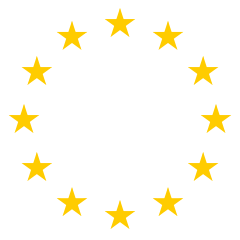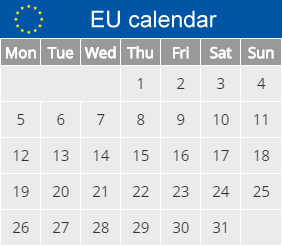History of the EU
How the European Union was created
The European Community was created as a result of efforts to establish lasting peace and stability in Europe. European federalist Jean Monnet convinced the French foreign minister on May 9, 1950 to propose that German-French coal and steel production be placed under joint control within an organization that would be open to other countries as well.
The main goals behind this idea were:
- a. Controlling the market and production of coal and steel b. Building mutual trust after II World War c. Controlling the arms industry
Historically significant dates:

Brexit
After 47 years of membership, the United Kingdom left the European Union - the single market and customs union - in 2020.
2020.

Sixth expansion
Croatia becomes the 28th member of the European Union in 2013.
2013.

Treaty of Lisbon
The Lisbon Treaty enters into force in 2009. The most important changes brought by the Treaty are two new functions within the institutional system of the European Union: the President of the European Council and the High Representative of the Union in the field of foreign policy and security policy in order to strengthen the position of the European Union on the international stage.
2009.

Fifth extension - part two
Romania and Bulgaria became members of the European Union in 2007.
2007.

Major expansion in 2004
Estonia, Cyprus, Latvia, Lithuania, Malta, Hungary, Poland, Slovakia, Slovenia and the Czech Republic become members of the European Union.
2004.

Treaty of Nice
The Nice Treaty of 2003 prepares a major enlargement with 10 new member states. The idea of the Constitution of the European Union is emerging.
2003.

Introduction of the Euro
The euro became the official currency of the European Union in 2002.
2002.

Treaty of Amsterdam
The Treaty of Amsterdam from 1999 introduces an obligation to the communities to increase the employment rate, as well as to create unity between the member countries in the area of protection of basic human rights, every kind of freedom and security of European citizens.
1999.

The fourth expansion
Austria, Finland and Sweden joined the European Union in 1995. At the same time, the Schengen Agreement, which abolishes the borders between the signatory countries, enters into force, and the EU gains powers in the field of immigration, control of the external borders of the Schengen zone and approval of visas and asylum for citizens of other countries.
1995.

Treaty of Maastricht
By the Treaty of Maastricht in 1993, all three communities were merged into one called the European Union. The basic idea of the new community is the creation of a common foreign, monetary and security policy. Then the three pillars of the EU are created:
- I pillar: Community;
- II pillar: Common foreign and security policy;
- III pillar: Joint judicial and police cooperation in criminal matters.
1993.

The third expansion
Spain and Portugal became members of the European Union in 1986, when the Single European Act was adopted, giving the parliament greater powers (it entered into force in 1987).
1986.

Second expansion
Greece joined the community in 1981.
1981.

First expansion
The first expansion took place in 1973, when Denmark, Ireland and Great Britain joined the Community. Norway was supposed to join the Community in this enlargement, but the referendum voted against joining.
1973.

Agreement on merging the executive authorities of all three communities
The agreement entered into force in 1967 (it was signed in 1965) and all three communities received common bodies: the Commission, the Council of Ministers and the Parliament. The headquarters of the institutions are in Brussels, Luxembourg and Strasbourg.
1967.

Roman Treaties
It soon became clear that the Coal and Steel Community was not enough, so in 1958 the European Economic Community and the European Atomic Energy Community (EURATOM) were founded. The idea was to create a common market that allows free movement of goods, people, capital and services, abolish trade restrictions, harmonize economic and social policies, as well as standardize customs duties, and help underdeveloped regions of member states.
1958.

European Coal and Steel Community
The European Coal and Steel Community, as the first form of unification, was created in 1952. The contract was concluded for 50 years and expired in 2002. The founding countries of the first Community are: France, Germany, Italy, Belgium, Luxembourg and the Netherlands.
1952.
Today, the European Union has 27 member countries and over 500 million inhabitants.













